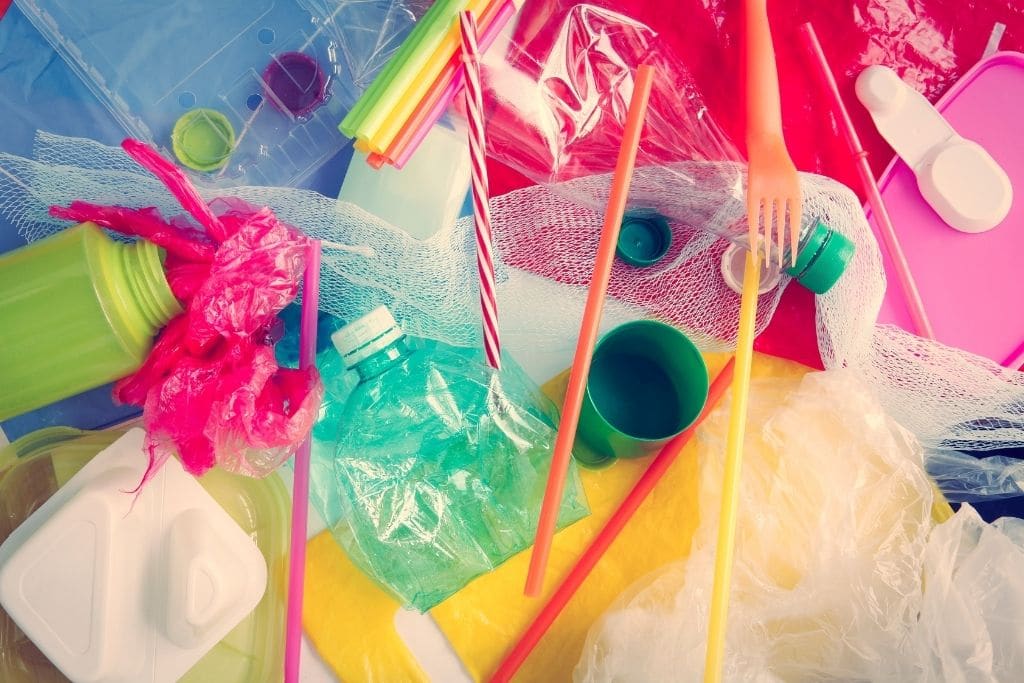Plastic pollution has risen to the forefront of public environmental awareness in the last few years. Spurred by images of turtles tangled in plastic bags, individuals have begun to evaluate their plastic consumption habits and strive to make incremental lifestyle changes to reduce plastic waste. Yet, despite their best intentions, well-meaning consumers are faced with shelves of products intentionally designed to fail or fade quickly into irrelevance. Spurred by their hunger for profit, the producers of these items employ product obsolescence strategies designed to guarantee the cycle of consumption that goes hand-in-hand with plastic waste proliferation.
—
Product Obsolescence Strategies Defined
Planned obsolescence occurs when a manufacturer purposefully makes a product outdated or non-functional within a set period determined at conception. Take Apple for instance; the tech giant admitted to slowing down iPhone batteries to preserve battery life, causing older models to turn off unexpectedly. A 2020 consumer fraud lawsuit claimed that Apple intentionally caused older models to malfunction, knowing that would compel consumers seeking improved performance to purchase new iPhones, boosting sales by millions of devices per year.
Even when an iPhone performs perfectly, millions of people scramble to substitute it with a slightly newer version when Apple releases a new model. This phenomenon illustrates perceived (or psychological) obsolescence, a tactic used to convince consumers that they need an updated product even though their existing product is working well. Using advertising techniques that exploit people’s psychological vulnerabilities, companies like Apple persuade consumers that their current possessions are outdated or unstylish. In another example, the fast fashion industry convinces consumers to replace useable clothing regularly to retain societal status.
These two business strategies ensure that people replace products regularly, maintain demand, and guarantee continual profit for manufacturers. In the 21st century, product obsolescence is intrinsically linked to consumerism, a pillar of the capitalistic economic model. Only a century ago, all three concepts were unheard of until they were coined in the 1900s.
The Origins of Planned Obsolescence
The industrial revolution created immense productive powers that could finally meet the basic needs of the majority of the population. As prosperity spread, companies realised that consumerism, defined by Webster’s Dictionary as “a preoccupation with and an inclination toward buying consumer goods,” was a profitable business model. As the strategy relied on people buying new items, the goal of producing long-lasting, serviceable products was displaced. Products had to break or need replacement to ensure endless consumer desire. As retail analyst Victor Lebow posited in 1955, “Our enormously productive economy demands that we make consumption our way of life, that we convert the buying and use of goods into rituals, that we seek our spiritual satisfaction, our ego satisfaction, in consumption.… We need things consumed, burned up, replaced, and discarded at an ever-accelerating rate.” In keeping with this new mindset, leading light bulb manufacturers colluded to shorten the lifespan of all lightbulbs from 2,500 hours to 1,000 hours, and thus planned obsolescence was born.
Soon after, in the mid-1900s, plastic became a commonly-used material. By nature, it is incredibly durable, contradicting the needs of the consumptive business model. Realising this, the oil companies that manufacture plastic products released items designed to be disposable and began persuading people to throw things away and buy new ones voluntarily. Advertisements claimed that disposable items like cups, cutlery, and plastic bags were more convenient, hygienic, and affordable – the ‘better’ way of doing things. Though plastic products are nearly invulnerable during a human lifespan, taking more than 100 years to break down in a landfill, consumers were persuaded that they were obsolete after one use. Other industries, like paper and aluminium, followed suit, and suddenly product obsolescence was everywhere, written into the very fabric of day-to-day existence. From plastic and paper products to fashion, the perception that items should be quickly replaced spread like wildfire.
Plastic Pollution Today
Today, nearly everything we own is designed to be discarded. Fridges purchased 20 years ago are still running, but those sold five years ago are already deteriorating. Fast fashion brands release 20+ new collections annually, compelling customers to buy the next best thing, far before the last best thing is unwearable. Millions of products are manufactured, purchased, used, and disposed of every day, consuming natural resources and creating massive amounts of waste. And to ensure that the cycle continues, planned and perceived obsolescence are employed, scheduling the demise of products before their creation and enforcing the practice of buying things to fit in. Notably, most of these modern products are made with one cheap, durable, and versatile material: plastic.
People have grown accustomed to plastic in the grocery store, the bathroom, their closet, and even on their dining room table. But as researchers report that plastic has been discovered in far less desirable places, the world is beginning to take notice. Photographs of plastic-strewn beaches and deserts heaped with discarded clothing have driven home the reality that plastic takes a very long time to break down, resulting in a massive plastic waste problem. And when waste does deteriorate, it becomes microplastics, which have been discovered in the bellies of sea creatures, the snow that falls in the arctic, and even human bodies. To compound the issue, studies that expose animals to the compounds used in plastic manufacturing have indicated that there is cause for concern that plastic poses a serious risk to human health.
You may also like, How Does Plastic Pollution Affect Humans?
Creating a Better Future
Social trends have begun to shift attitudes and behaviours away from unchecked consumption. Faced with a problem and a dearth of readily available solutions, consumers seeking a better way have focused their environmentally motivated ire on specific ideas and products. As Susan Freinkel, author of Plastic: A Toxic Love Story, pointed out, “the plastic bag has come to represent the collective sins of the age of plastic.” Consequently, legislation banning or taxing plastic bags has been implemented worldwide.
By positioning product obsolescence strategies as the next symbol of wanton environmental destruction, organisations like HOP., a group working against product obsolescence, can mobilise the masses. The link between the oil industry and the plastic pollution crisis is indisputable, but so is the intrinsic connection between product obsolescence strategies and plastic product sales.
Through education and awareness, they can motivate collective action. And when united individuals and organisations promote behavioural change and advocacy in consumers, environmental legislation is the eventual result. What worked with plastic bags can work with other aspects of plastic pollution, including the business strategies that encourage it.













